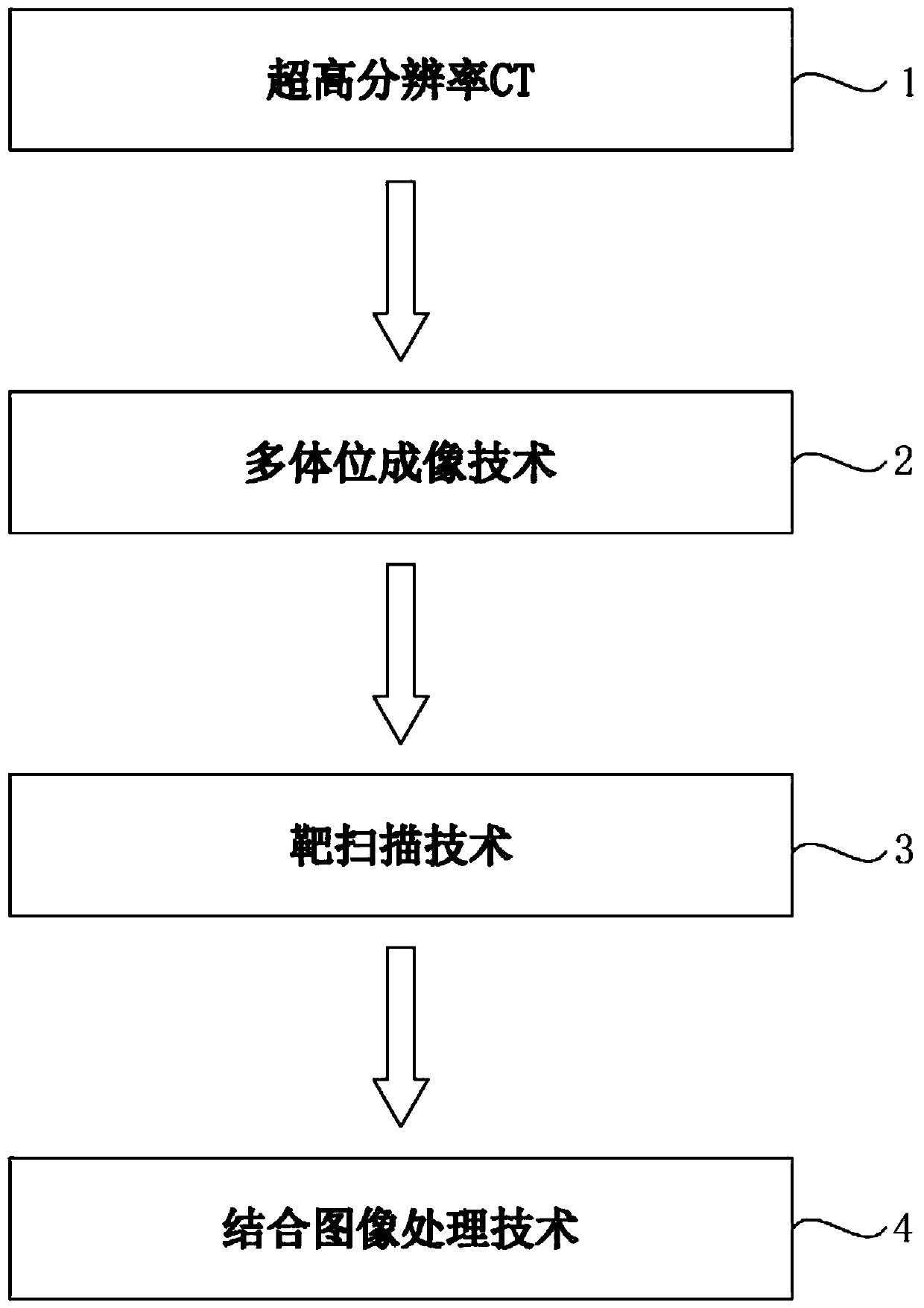Key CT technology of lung carcinoma in-situ identification method
An identification method, CT technology, applied in the fields of radiological diagnostic equipment, medical science, diagnosis, etc., can solve the problems that have not been reported, and achieve the effect of clear images
- Summary
- Abstract
- Description
- Claims
- Application Information
AI Technical Summary
Problems solved by technology
Method used
Image
Examples
Embodiment 1
[0030] Please refer to the attached figure 1 , Attached figure 1 It is a schematic diagram of the plane module of the key CT technology of a method for identifying lung carcinoma in situ in this embodiment. The key CT technologies of the lung carcinoma in situ recognition method include ultra-high resolution CT1, multi-position imaging technology 2, target scanning technology 3, combined image processing technology 4;
[0031] The said ultra-high resolution CT1 is an ultra-high resolution CT based on a 1024×1024 matrix, and its resolution is 4 times higher than that of a conventional CT based on a 512×512 matrix;
[0032] The multi-position imaging technique 2 is supine, prone, left-side, and right-side imaging;
[0033] The described target scanning technology 3 uses a small field of view (FOV) under the same matrix to reduce pixels and improve spatial resolution;
[0034] The combined image processing technology 4 is to analyze the characteristic imaging performance of ground glas...
Embodiment 2
[0036] The specific identification method and process of the key CT technology of the lung carcinoma in situ identification method:
[0037] Ultra-high resolution CT based on a 1024×1024 matrix is used; when the matrix is the same, a small field of view (FOV) is used to reduce pixels and improve spatial resolution; and multi-position and multi-angle imaging are used to keep the lesion away On the side of the examination table, the influence of the vascular drop effect is minimized, thereby increasing the image contrast and displaying the lesion more clearly.
[0038] It should be noted that: unlike the original data image obtained by conventional scanning for target reconstruction, target scanning is not a simple geometric enlargement, and the image is clearer.
[0039] Instead, the target scan is based on ultra-high-resolution CT, multi-position imaging, so that the resulting image is clearer, and can clearly show the internal fine structure, density, boundary and surrounding si...
PUM
 Login to View More
Login to View More Abstract
Description
Claims
Application Information
 Login to View More
Login to View More - Generate Ideas
- Intellectual Property
- Life Sciences
- Materials
- Tech Scout
- Unparalleled Data Quality
- Higher Quality Content
- 60% Fewer Hallucinations
Browse by: Latest US Patents, China's latest patents, Technical Efficacy Thesaurus, Application Domain, Technology Topic, Popular Technical Reports.
© 2025 PatSnap. All rights reserved.Legal|Privacy policy|Modern Slavery Act Transparency Statement|Sitemap|About US| Contact US: help@patsnap.com

